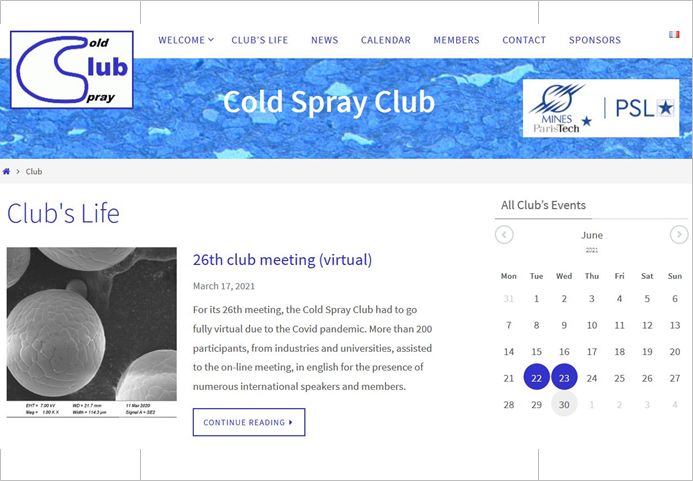



 Lecture
Lecture
Bio-based aerogels: new eco-friendly porous materials for thermal insulation and controlled release
We are pleased to invite you to attend the PhD defense of Nicolas GUENINCHAULT untitled
Experimental and numerical investigation of incipient plasticity in FCCpolycrystals by X-ray synchrotron topotomography and CPFEM
Adress : 60, Boulevard Saint Michel, Paris (RER B Station Luxembourg)
abstract : Understanding the intimate details of plastic deformation in polycrystalline materials is an important issue to improve material design and ultimately produce safer structural parts with less impact on the environment. This understanding is presently limited by our ability to observe both the microstructure of the material and the deformation processes in three dimensions (3D) at small length scales and inform mechanical simulations with physical deformation mechanisms of the crystal lattice. Considerable progress has been made in the last decade with surface observation (eg EBSD coupled to digital image correlation) which led to numerous studies combining experimental observations and simulations from the surface microstructure. However, an accurate comparison without knowing the underlying microstructure remain challenging. In this work, we propose a new methodology which allows a quantitative comparison between the observation of deformation mechanisms, the evolution of the grain lattice curvature and the simulated mechanical fields. For that purpose, a mechanical stress rig dedicated for synchrotron 4D diffraction imaging experiments has been designed, and used to deform an Aluminium-Lithium specimen under tension. The 3D grain map has been obtained by diffraction contrast tomography analysis, and a cluster of three grains within the bulk has been selected to be the region of interest of the 4D observation by X-ray topotomography. The appearance and evolution of 3D crystalline defects as a function of the applied load has been observed to be located along well defined crystallographic planes. All three grains showed plastic activity on along two different set of planes, which is not always coherent with a macroscopic Schmid Factor analysis. The change of the amplitude and the orientation of the average grain curvature has been measured with an unprecedented level of detail by means of 3D rocking curve analysis. In parallel, crystal plasticity finite element (CPFE) simulations have been carried using the 3D grain map measured experimentally. Tension loading was applied to reproduce the experiment numerically and compare the plastic activity on a grain by grain basis. The slip system activity predicted by the model matches in most cases the observed two slip system scenario. A mathematical framework to predict the local Bragg angle based on the stretch and rotation of the crystal lattice by the elastic strain tensor was derived. Post-processing the intragranular strains fields from the CPFE results allowed to simulate 3D rocking curves, showing excellent agreement with the experimental measurements. This result confirms that in situ X-ray topotomography is a promising tool to study the early stage of polycrystal plasticity within the bulk of millimetric material specimens.

A new version of the COLD SPRAY CLUB website is now…
The COLD SPRAY CLUB concerns laboratories, technology…
> En savoir +

Formation
A MINES ParisTech PhD student awarded at the…
Josiane Nguejio, PhD student at Centre des Matériaux…
> En savoir +

Recherche
The FEMS Lecturers 2014-2015 include Henry PROUDHON
Lecturer Series This is a scheme which sponsors selected…
> En savoir +

Recherche
award for a team of Centre des Matériaux
Nicolas Gueninchault who work in teams M2 and COCAS with Henry…
> En savoir +
Recherche
The SF2M award three medals to doctors of the centre des…
The medal Réaumur is given by SF2M, each two…
> En savoir +
